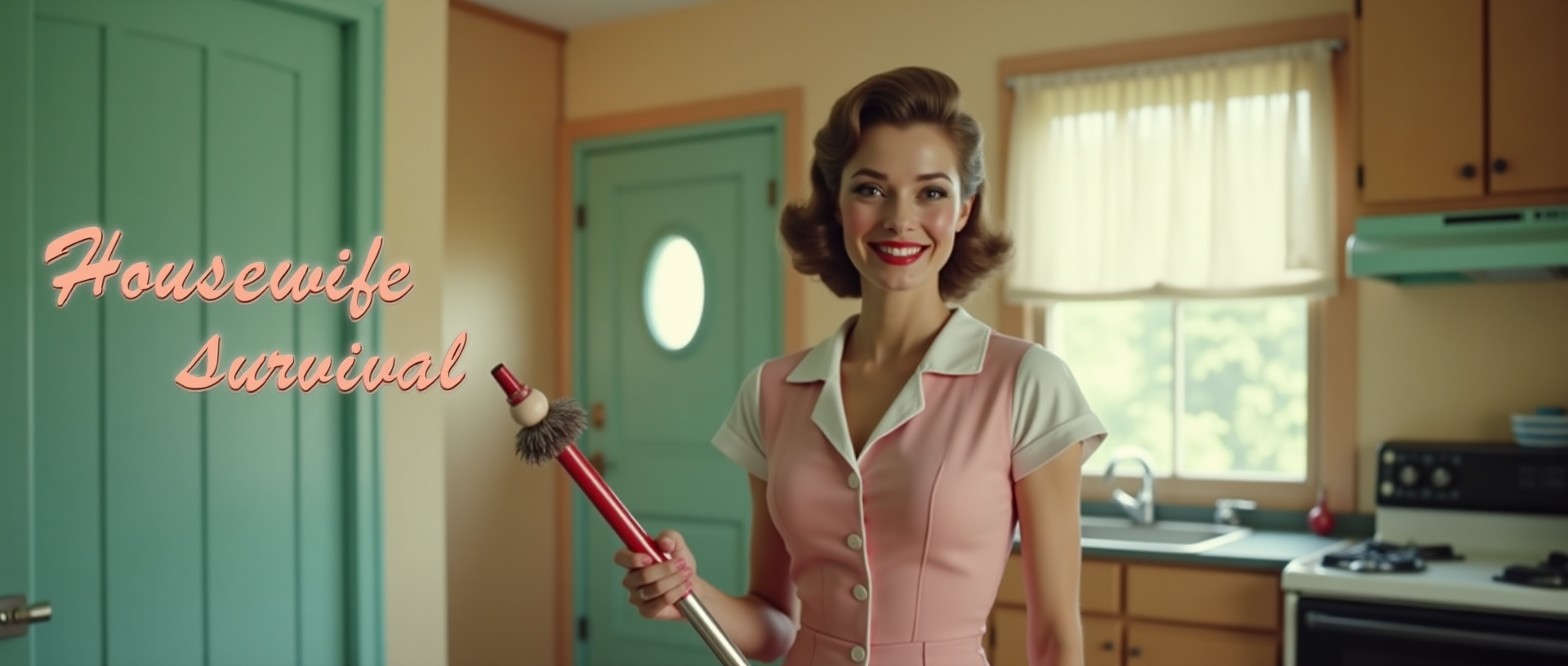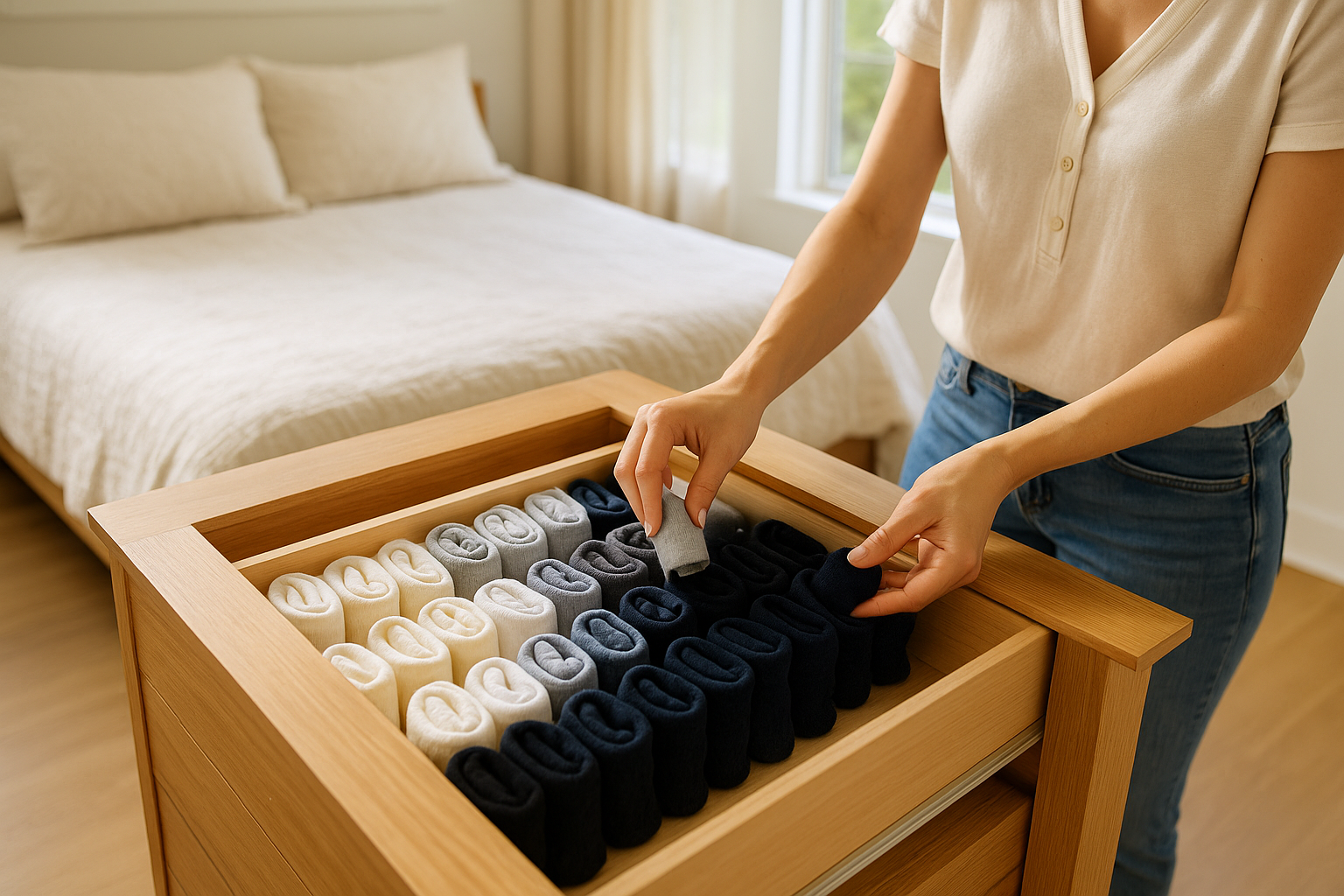Table of Contents
There I was last Sunday, sitting on my bedroom floor with a mountain of clean socks that looked like a textile avalanche had occurred in my laundry basket, trying to match pairs while questioning why I apparently owned forty-seven slightly different shades of black socks that all looked identical until you tried to actually pair them together.
Two hours later, I’m still sock-matching like some kind of demented memory game, with single socks scattered around me like evidence of a sock serial killer, and I’ve somehow created more chaos than I started with because now I have “maybe matches” piles, “definitely doesn’t match anything” piles, and mysterious lone socks that might belong to people who don’t even live in my house.
The breaking point came when I realized I’d spent more time organizing socks than I’d spent on any other single household task that weekend, and my sock drawer still looked like a disaster zone where organization went to die. Every time I opened that drawer to grab socks for the day, it felt like playing sock roulette – would I find matching pairs or would I be wearing mismatched socks under my professional attire while hoping nobody noticed?
Standing in my bedroom surrounded by sock chaos, I had this revelation: I was treating sock organization like it was rocket science when literally nobody in the history of human civilization has ever cared about whether someone else’s socks were perfectly matched, folded, and arranged like a retail display.
The Great Sock Matching Marathon Disasters
Here’s what I discovered about traditional sock organization: it’s not just time-consuming – it’s a completely unnecessary perfectionist exercise that creates more household stress than actual benefit.
The Sunday Sock Sorting Nightmare: Every laundry day became this elaborate sock-matching project that consumed hours of time that could have been spent on literally anything more important than achieving perfect sock pair coordination. I’d be sitting there with dozens of socks, trying to match patterns, colors, and fabric weights like I was curating a museum exhibit.
The frustration was real – spending forever trying to match socks that looked identical until you held them next to each other and discovered one was navy and the other was black, or one was crew length and the other was ankle, or they were the same color but different brands with slightly different fits.
The Missing Sock Mystery Crisis: No matter how carefully I matched pairs, socks would mysteriously disappear between the dresser drawer and actually wearing them. I’d have drawers full of perfectly organized sock pairs, but somehow always end up wearing mismatched socks because one sock from yesterday’s pair had vanished into the same parallel dimension that steals hair ties and pen caps.
The missing sock phenomenon meant that all my careful pairing work was temporary anyway – within a week, half my “perfect pairs” would be single socks again, creating new organizational challenges and making the whole matching exercise feel pointless.
The Drawer Space Tetris Game: Folded and paired socks took up enormous amounts of drawer space, requiring this elaborate stacking system that collapsed every time you removed one pair. My sock drawer looked organized for about five minutes after laundry day, then devolved into chaos the moment anyone actually tried to use the socks.
I was dedicating an entire dresser drawer to sock storage that could have housed other clothing if I wasn’t insisting on this elaborate sock organization method that served no practical purpose beyond making my laundry routine unnecessarily complicated.
What I Learned About Sock Psychology
The real issue with sock organization isn’t finding the perfect system – it’s recognizing that most organizational energy spent on socks is wasted effort that creates stress without meaningful benefits:
Nobody Inspects Your Socks: The perfectionist drive to have matched, perfectly folded sock pairs assumes that someone, somewhere, cares deeply about sock coordination. In reality, socks are hidden inside shoes and covered by pants, making sock matching an invisible effort that benefits nobody.
Sock Matching Creates False Productivity: Spending hours organizing socks feels productive but actually delays completing more important household tasks. The satisfaction of perfectly matched sock pairs doesn’t justify the time investment when that same energy could address genuinely impactful household organization.
Perfect Systems Fail in Real Life: Any sock organization method that requires ongoing maintenance, careful handling, or elaborate procedures will fall apart the moment life gets busy. Sustainable organization needs to work with human laziness, not against it.
How the Rolling Method Changed Everything
After months of sock-matching marathons and drawer organization failures, I discovered the most liberating approach to sock management: just roll them individually and throw them in the drawer. No pairing, no folding, no elaborate stacking systems that collapse when touched.
Revolutionary? Not even slightly. Life-changing? Absolutely.
Suddenly, laundry day sock processing took five minutes instead of two hours. My sock drawer had more space and stayed organized without any maintenance. Most importantly, I stopped caring about sock perfection and redirected that energy toward household tasks that actually mattered.
The Genius 3-Step Sock Organization Method That Actually Works
This sock organization method eliminates matching, pairing, and elaborate folding while creating functional storage that stays organized with zero maintenance. Here’s the system that freed me from sock perfectionism:
Step 1: Abandon Sock Matching Forever
Accept that sock matching is an unnecessary perfectionist exercise that wastes time without providing meaningful benefits. Nobody cares if your socks match perfectly, including you once you realize how much time you’ve been spending on invisible sock coordination.
This sock organization method works because it eliminates the most time-consuming and frustrating part of sock management – the matching process that turns simple laundry folding into complex puzzle-solving exercises.
Give yourself permission to wear slightly mismatched socks without guilt. The difference between navy and black socks is invisible to everyone including yourself once shoes are on, making perfect matching an exercise in futility.
Step 2: Roll Individual Socks Into Compact Bundles
Take each clean sock individually and roll it from toe to opening, creating a compact bundle that stands upright in your drawer. This sock organization method takes about three seconds per sock and requires no pairing or complex folding techniques.
Rolling creates uniform shapes that stack efficiently and use drawer space more effectively than folded pairs that create irregular shapes requiring careful arrangement to fit properly in storage areas.
The rolling technique works with any sock type – athletic socks, dress socks, casual socks all roll into similar compact shapes that organize uniformly regardless of original sock style or material.
Step 3: Store Rolled Socks in Simple Rows
Place rolled socks in your drawer in simple rows without worrying about perfect organization, color coordination, or elaborate arrangement systems. Just drop rolled socks into available space and grab whatever you need when getting dressed.
This sock organization method stays organized naturally because rolled socks maintain their shape and don’t require careful stacking or arrangement that collapses when items are removed.
When you need socks, grab any two rolled socks without spending time searching for perfect matches. The goal is functional sock access, not achieving sock drawer perfection that nobody will see or appreciate.
The Before and After of Sock Management
Before Sock Organization Method – The Marathon Matching: Sunday laundry: 2 hours spent matching and folding sock pairs Drawer organization: Elaborate stacking system that collapses immediately Daily sock selection: Searching for matching pairs, frustration with singles Drawer space: Bulky paired socks taking up excessive storage room Weekly maintenance: Constant reorganization as stacking system fails
After Sock Organization Method – The Rolling Revolution: Sunday laundry: 5 minutes rolling individual socks, no matching required Drawer organization: Self-maintaining rows of rolled socks Daily sock selection: Grab any two socks, get dressed, move on with life Drawer space: Compact rolled socks using space efficiently Weekly maintenance: Zero – system maintains itself automatically
Why This Sock Organization Method Works So Well
The rolling approach eliminates specific time-wasters and frustrations that make traditional sock management unnecessarily complicated:
Eliminates Time-Consuming Matching: Rolling individual socks removes the most tedious part of sock organization – the matching process that turns simple laundry into complex, time-consuming puzzle-solving exercises.
Maximizes Drawer Space: Rolled socks use storage space more efficiently than folded pairs, creating room for other clothing items in dresser drawers that were previously dedicated entirely to sock storage.
Creates Self-Maintaining Organization: Unlike elaborate stacking systems that require constant maintenance, rolled socks stay organized automatically without ongoing effort or careful handling during daily use.
Reduces Decision Fatigue: Grabbing any two socks eliminates the daily decision-making about sock coordination, freeing mental energy for more important morning routine choices.
Eliminates Sock Perfectionism: This sock organization method gives you permission to stop caring about invisible sock coordination that wastes time without providing meaningful benefits to your life or appearance.
Common Sock Organization Method Mistakes That Waste Time
Rolling Pairs Together: Some people try to roll matched pairs, which defeats the purpose by maintaining the time-consuming matching step while adding unnecessary complexity to the rolling process.
Attempting Color Organization: Organizing rolled socks by color creates additional work without meaningful benefits since sock selection doesn’t require color coordination for functionality.
Over-Rolling Technique: Spending excessive time on perfect rolling technique defeats the purpose of quick, efficient sock organization that should take seconds per sock, not minutes of detailed attention.
Maintaining Multiple Sock Systems: Using different organizational methods for different sock types creates confusion and complexity rather than the streamlined simplicity that makes rolling effective.
Building Your Sock Organization Method Routine
Start implementing the rolling method with your next load of clean socks rather than reorganizing your entire existing sock collection. New habits develop more easily when attached to routine activities like laundry folding.
Choose one drawer for all socks instead of distributing them across multiple storage areas. Consolidated sock storage using this sock organization method works more efficiently than maintaining multiple organizational systems.
Practice the rolling technique until it becomes automatic – about three seconds per sock is the target speed that makes this method faster than traditional folding and pairing approaches.
The Sock Organization Method Reality Check
Will rolling socks eliminate every clothing organization challenge and turn you into a perfectly organized dresser manager? Of course not – you’ll still have other clothing organization needs and laundry management challenges. Will it dramatically reduce time spent on sock-related organization while improving drawer space usage? Absolutely.
The goal of simplified sock organization isn’t achieving perfect clothing storage or impressing anyone with elaborate organizational systems. The goal is reducing time spent on tasks that don’t meaningfully impact your life while creating functional storage that works with real-world usage patterns.
I still have clothing organization challenges and occasionally let laundry pile up, but now sock management isn’t contributing to household stress or consuming weekend time that could be spent on more important activities.
The sock organization method isn’t about becoming careless with clothing care or abandoning all organizational standards. It’s about recognizing that some organizational efforts create stress without meaningful benefits, and giving yourself permission to optimize for efficiency rather than invisible perfection.
Because life’s too busy to spend hours matching socks that nobody will see when you could roll them individually and actually have time for activities that matter more than invisible sock coordination perfection.

